

Before the invention of the calendar, people watched the sun, the moon, and the stars to tell time and denote the annual passing of the seasons. The daily rising of the sun provided a short unit of time, the solar day. The cycle of seasons roughly indicated a longer unit of time, the solar year.
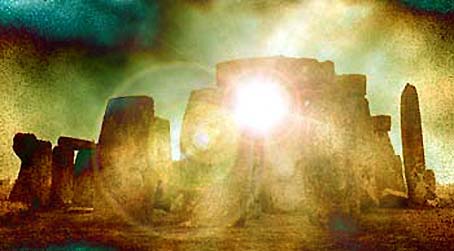
were used as celestial calendars to mark seasons.
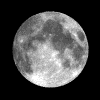
A lunar calendar is one in which days are numbered within each lunar phase cycle. Because the length of the lunar month is not an even fraction of the length of the tropical year, a purely lunar calendar quickly drifts against the seasons. It does, however, stay constant with respect to other phenomena, notably tides. Lunar calendars are believed to be the oldest calendars invented by mankind. Cro-Magnon people are claimed to have invented one around 32,000 BC. Lunar calendars are also liked to feminine goddess energies. A lunisolar calendar is a lunar calendar that compensates by adding an extra month as needed to realign the months with the seasons. An example is the Jewish calendar which uses a 19 year cycle.
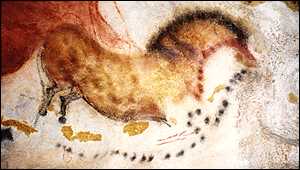
A dappled, brown horse and a lunar calendar
BBC - October 19, 2000
What might be one of the oldest lunar calendars ever created has been identified on the walls of the famous, prehistoric caves at Lascaux in France. The interpretation of symbolic paintings, dating back 15,000 years, show the Moon going through its different phases.
A German researcher has previously associated patterns left in the caves with familiar stars and constellations. He now says groups of dots and squares painted among representations of bulls, antelope and horses depict the 29-day cycle of the Earth's satellite. With special permission from French authorities, I went into the Lascaux caves with Dr Rappenglueck to inspect the paintings for myself. It was an opportunity most people would never get - to protect the historic site from unnecessary wear and tear, all visitors now tour a mock-up of the caves, the so-called Lascaux II.
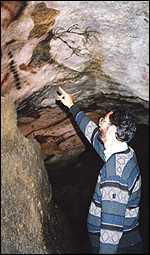
The secret of understanding these caves is to understand the people who painted the walls. They painted the sky, but not all of it. Just the parts that were specially important to them.
With eyes becoming adjusted to the half-light, I entered the Chamber of the Bulls and stood there in amazement. Anyone who has seen the paintings on the walls can be left in no doubt that they represent some of the greatest works of art every created. The animals were painted on to the walls of the chamber by Cro-magnon man, one of our close relations, 15,000 years ago. He thrived in a temperate valley in the Dordogne while the rest of Europe was held in the grip of an ice age. As I marvelled at the spectacle, Dr Rappenglueck moved ahead of me. "Here it is," he said, as he headed down the passage. He was pointing to a line of dots painted half way up the wall. "Count them. Count them." Below a stunning painting of a deer was a row of 13 dots, ending in a square. "Why 13?" I asked.
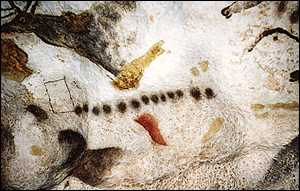
Half the cycle: 13 dots and an empty square
"It's half of the Moon's monthly cycle," Dr Rappenglueck said. "One dot for each day the Moon is in the sky. At the new Moon, when it vanishes from the sky, we see an empty square, perhaps symbolically representing the absent Moon. "But there's more, further along." The Munich researcher gestured to me to move along the passageway. Beneath a dappled, brown horse with a dark mane was another row of dots. This time there were more of them. "There are 29 of them - one for each day of the Moon's 29-day cycle when it runs through its phases in the sky. It was a rhythm of nature that was important to these people."
Dr Rappenglueck looked around at the bulls, antelope and horses painted on the walls with such obvious admiration. "They were aware of all the rhythms of nature. Their survival depended on them, they were a part of them."
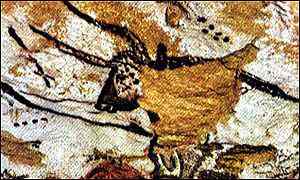
The Pleiades star cluster sits above the bull's shoulder
But there is another puzzle. I pointed to the series of dots that curve away from the main row. "Why do they do that?" I enquired. "I think that indicates the time of the new Moon, when it disappears from the sky for several days," said Dr Rappenglueck. There is definitely astronomy on the walls of Lascaux. Earlier this year, Dr Rappenglueck identified a series of constellations painted on the wall of a shaft off the main chamber at Lascaux. The tiny pattern of the Pleiades star cluster can also be seen hanging above the shoulder of a bull near the entrance to the main passageway. We will probably never understand completely what Cro-magnon man had in mind when he painted the Lascaux caves. The images of the animals seem obvious but not the geometrical shapes and patterns scattered in between these creatures.
ANCIENT AND LOST CIVILIZATIONS INDEX